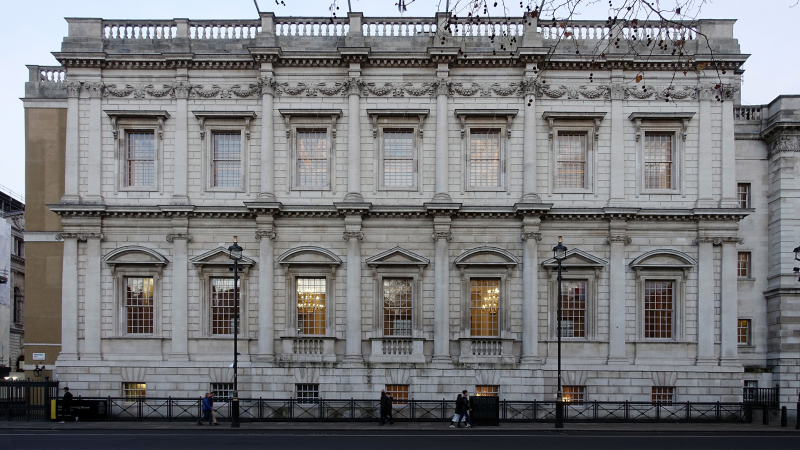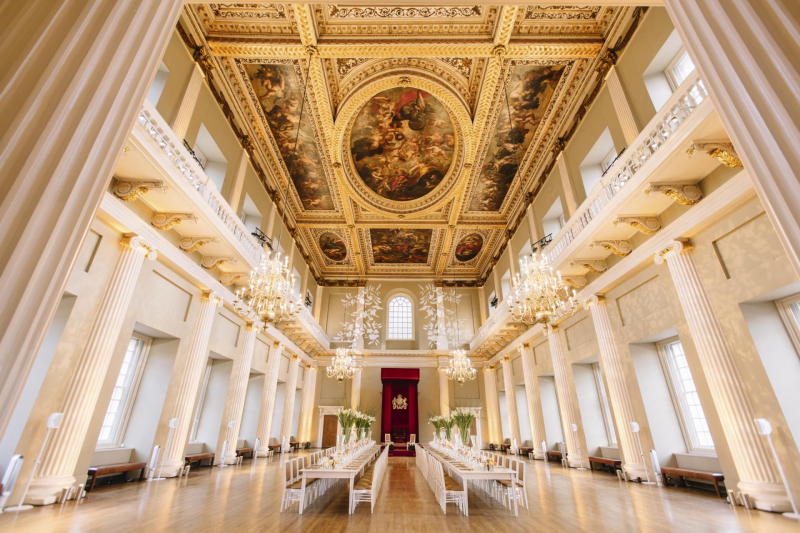Banqueting House
It is a social setting, as the name would imply. The first important English architect of the early modern era was Ingo Jones. He was the first to introduce to Britain the Italian and Romantic classical architectural styles. The Banqueting House, which he completed in 1622 after beginning construction in 1619, is one of his notable creations.
There were two banqueting houses before the one we see now. The first structure, which was intended to be temporary and was composed of bricks, wood, and canvas, was where Elizabeth I was courted by her aristocratic suitors. Its ceiling was exquisitely decorated with vines and fruit, all of which represented the hoped-for fecundity of a marriage that never took place. This historic banqueting house was in high demand as a location for masques from Elizabeth's succession despite its fragile construction. This type of elaborate show was a favorite of James I and his wife Anne of Denmark. James eventually hired Robert Stickells, an architect, to design a larger hall. The King, however, was unhappy with the structure. Although highly elaborate, a gallery supported by a forest of columns obscured much of the audience's view.
The phrase "banqueting house" was a bit misleading. The house's hall was actually utilized for banqueting as well as royal gatherings, rituals, and masque performances.
Location: London
Time: 1619-1622













